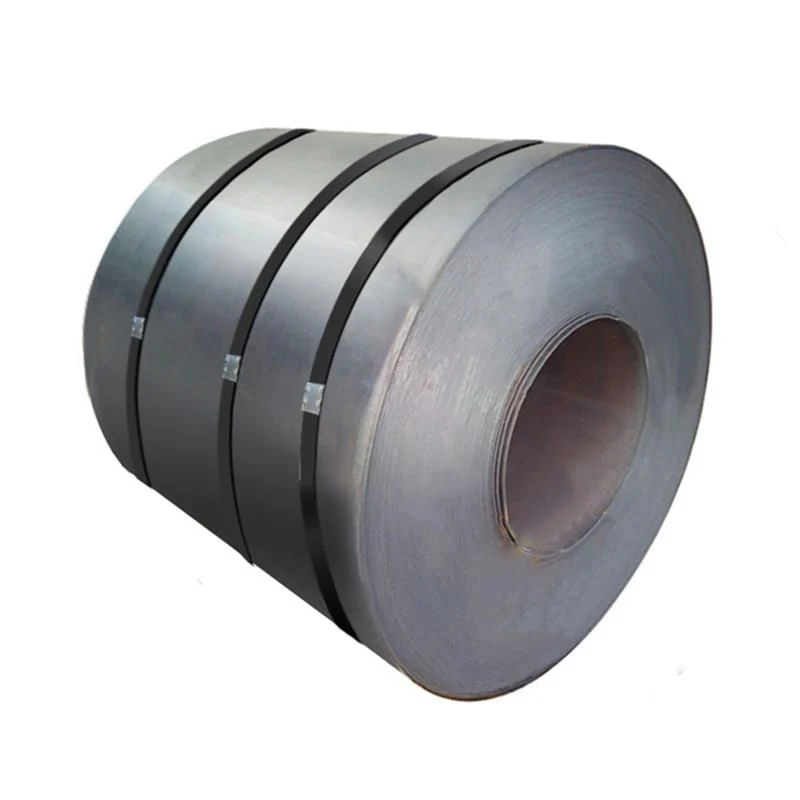Which Carbon Steel Coil Choices Actually Reduce My Total Cost?
2025-11-07
My week typically starts in the collection area rather than the boardroom—my phone holds two photographs: one of coil stock deviating by 3 millimetres in width, the other showing galvanised coating flaking off due to an excessively tight bending radius, all because I assigned coating specifications before confirming the tools. During the rainy season, containers arrived ‘ drenched in sweat ’ from start to finish. Upon unpacking, we discovered sheets covered in white rust spots, followed by an exceptionally tense phone call with the finance department. These lessons taught me to distrust the flowery language in brochures and focus instead on who answers the phone when things go awry. Today, WHT stands among the few partners who proactively send packaging photographs and humidity card readings before sealing containers. They even candidly challenge my over-engineered components. Consequently, our Carbon Steel Coil production process has become reassuringly stable—production line stoppages have decreased, disputes over coil curvature and coating quality have diminished, and capital tied up in scrap material has significantly reduced.
What should I lock first when I source carbon steel coil?
- End use — stamping, roll-forming, laser cutting, structural bracing, or automotive brackets all push the spec in different directions.
- Grade and strength window — low-carbon deep-draw (e.g., IF, CQ, DQ) for formability vs. higher-strength (HSLA) when weight or stiffness matters.
- Process route — hot-rolled, pickled-and-oiled (P&O), cold-rolled, annealed, temper-passed; each step trades surface for cost.
- Coating strategy — oil only, phosphated, galvanized (G60–G235 or Z180–Z725), or pre-painted when downstream paint is a bottleneck.
- Geometry and tolerances — thickness, width, ID/OD, coil weight, flatness class, edge (mill vs. slit), camber and crown expectations.
- Quality records — heat number traceability, MTC with chemistry and mechanicals, lot map for multi-slit strands.
How do I match application to spec without overbuying?
| Application | Recommended route | Typical thickness | Key checks | Common risks | My fix |
|---|---|---|---|---|---|
| Deep-draw housings | Cold-rolled IF or CQ, annealed, temper-pass, light oil | 0.5–1.2 mm | r-value, n-value, surface class | Orange peel, split at punch radius | Lower yield grade, bigger radii, temper control |
| Roll-formed channels | HR P&O or galvanized HSLA | 1.5–3.0 mm | Yield strength, crown, flatness | Edge wave, springback, tool chatter | Specify flatness class, slit with minimal burr, add beads |
| Laser-cut brackets | HR P&O or cold-rolled CQ | 2.0–6.0 mm | Scale removal, hardness uniformity | Scale re-oxidation, dross, warp | P&O + light oil, temper-pass, stress-relief if tight |
| Outdoor fasteners and clips | Galvanized G90–G180 or Z275–Z450 | 0.8–2.0 mm | Coating mass, adhesion, spangle | Flaking at bends, white rust | Min bend radius by spec, dry wrap with VCI |
| Automotive reinforcement | HSLA 340–550 MPa | 1.0–2.5 mm | Yield window, elongation, bake response | Split at pierce, lot spread | Tight heat grouping, APQP run-at-rate |
Why do lead time and price swing and how do I plan around it?
- Route capacity — cold-reduction and galvanizing lines create bottlenecks even when hot-rolled is available.
- Coating mass and surface — heavier zinc and special finishes queue behind standard runs.
- Coil weights and slit mix — odd widths and light coils slow packing; combining customer strands improves yield but needs coordination.
- Logistics seasonality — monsoon and winter lanes raise moisture risk; holiday rail and port congestion adds days.
My playbook: lock base grade early, keep two acceptable thicknesses, and pre-approve alternates. With WHT, I ask for a rolling three-month mill plan plus a backup service-center slot, which usually trims a week off surprises without bidding everything again.
Where do defects really come from and how do I keep scrap off my books?
- Flatness and shape — edge wave, center buckle, coil set; specify flatness class and require coil maps for slit strands.
- Surface — scratches, chatter marks, roll dents; request last stand inspection and sample sheet pull.
- Metallurgy spread — heat-to-heat variation on yield and elongation; group heats in the same lot for matched forming.
- Moisture — condensation makes “transit rust”; use VCI, dry wrap, desiccant, and humidity data loggers for sea freight.
Which standards and numbers do buyers actually check before sign-off?
| Item | Why it matters | What I accept |
|---|---|---|
| Material spec | Aligns mechanicals and chemistry | ASTM A1008/A1011, EN 10130, JIS G3141 or equivalent in PO |
| Thickness tolerance | Controls part weight and bend behavior | Per standard class or tighter where tooling is sensitive |
| Yield and elongation | Predicts formability and springback | MTC values within the agreed window across heats |
| Coating mass | Corrosion life and bend adhesion | G90/G120 or Z275/Z350 verified by test coupon |
| Flatness and camber | Roll-form speed and laser quality | Flatness class stated, camber per meter documented |
| Traceability | Fast containment if a lot drifts | Heat number, coil number, slit strand ID tied to packs |
How do I choose between hot-rolled P&O and cold-rolled for clean cutting?
- Hot-rolled P&O — good for laser or plasma where scale would be a problem; lower cost than cold-rolled with a workable surface.
- Cold-rolled — tighter thickness control and smoother finish for tight press tools or visible parts.
- Temper-pass option — helps flatness and minimizes yield-point elongation marks on formed skins.
When tolerances are generous, I start with P&O and invest savings in tooling maintenance. For cosmetic skins, cold-rolled wins without argument.
When does upgrading to galvanized or pre-painted make sense?
- Outdoor or condensed-humidity environments benefit from galvanized; pick the coating mass based on salt-spray targets and bend geometry.
- High mix and short lead time in downstream paint shops often justify pre-painted coil; consistent color and faster takt usually offset the premium.
- For tight bends, I verify minimum bend radius in the data sheet before committing to heavy zinc or thick paint.
What packaging and shipping details actually prevent headaches?
- Choose eye-to-sky for long ocean moves unless the container blocking is exceptional.
- Add VCI paper, inner and outer wraps, edge protectors, and desiccant bags with a humidity indicator card.
- Request wood saddles sized to coil OD and weight; insist on photos before container seal.
- Log coil numbers and positions in the container so QC knows where to start if moisture is detected.
On export lots, my WHT shipments include a packing photo set and a simple moisture log. That small routine has cut white-rust disputes to near zero.
How does WHT fit into a practical sourcing plan without feeling like an ad?
I evaluate partners on three things: consistency, communication, and problem-solving speed. With WHT, the value shows up in coil tracking, predictable slit quality, and a willingness to adjust schedules when end-user demand moves. It is not about flashy claims; it is about fewer line stops and clean paperwork when I need to trace a lot. That is why I keep them in my vendor mix for Carbon Steel Coil programs that punish delays.
What information should a supplier get from me on day one?
- Part drawings or gauges with min-max thickness and critical bends.
- Target yield strength and allowable alternates.
- Annual volume, release cadence, and acceptable coil weights.
- Surface expectations, coating mass, and oiling preference.
- Packing method, lane risks, and documentary needs for customs.
Shall we review your spec together and turn it into a clean quote?
If you want a fast, practical review or a landed cost comparison, contact us and tell me where the risk sits in your build. You can leave an inquiry with drawings and a brief note about your forming process. I will translate that into a clear specification, propose two costed alternates, and flag any tolerance that could bite you later.



